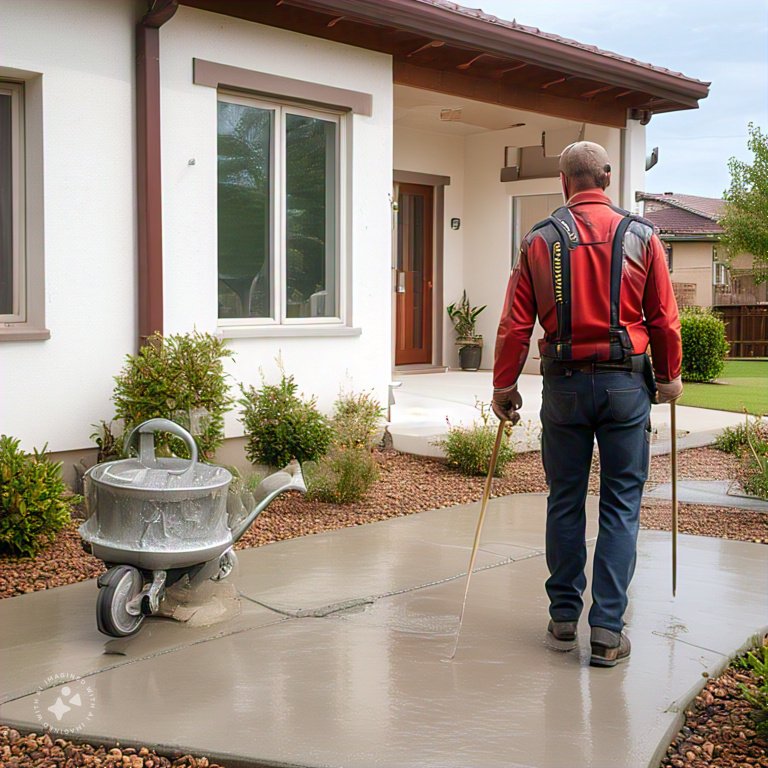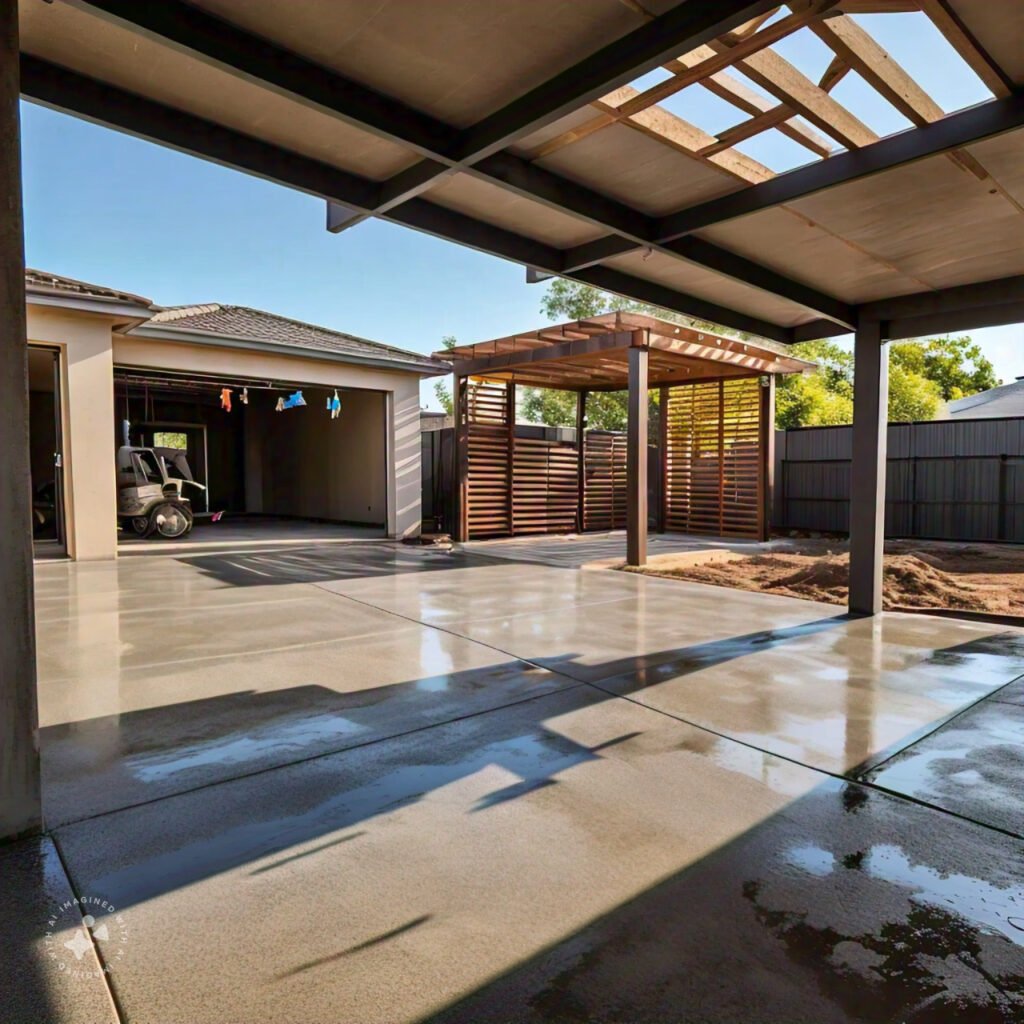Imagine building your dream patio or driveway while also reducing your carbon footprint. That’s now possible thanks to innovations in low-carbon cement. As sustainability becomes a growing priority for homeowners, concrete construction is getting a green makeover. This new wave of eco-conscious building material not only helps the planet but can also improve your home’s durability and value. Let’s dive into how low-carbon cement is changing the way we think about building with concrete on residential projects.
What Is Low-Carbon Cement and Why Should Homeowners Care?

Low-carbon cement may sound like a high-tech industry buzzword, but it’s something every homeowner should get familiar with. It’s not just a better choice for the planet—it’s often a better choice for your property, too.
Traditional cement, known as Portland cement, is a major contributor to global carbon dioxide emissions. That’s because it relies heavily on limestone, which, when heated, releases large amounts of CO2. In fact, making cement accounts for nearly 7% of the world’s carbon emissions. Low-carbon cement is designed to change that by using alternative materials and modern processes that cut down these emissions dramatically.
Instead of relying solely on limestone, low-carbon cement blends in other materials that are either industrial byproducts or naturally lower in carbon. This approach doesn’t just reduce CO2—it also improves the cement’s performance in residential projects. Homeowners will be glad to know that many low-carbon cements set faster and achieve higher strength more quickly than conventional options.
For outdoor projects like driveways, patios, walkways, and even foundations, low-carbon cement proves itself as a dependable performer. Its quicker setting time can mean shorter construction schedules. That translates to less disruption around your home and faster enjoyment of your new concrete space. More impressive still is its long-term durability. Low-carbon cement often resists issues like cracking and surface wear better than traditional mixes, which lowers your maintenance and repair costs over time.
Environmentally, the case is even stronger. Reducing CO2 during construction has a ripple effect. Choosing low-carbon cement helps lower your home’s overall carbon footprint. As more cities and neighborhoods embrace green building practices, homes built or renovated with sustainable materials are likely to be more attractive to future buyers. Many communities also recognize the environmental value of sustainable construction—some even provide local incentives or align with green home recognition programs like this city initiative in Sugar Land, Texas.
If you’re planning a new patio or need to replace a cracked driveway, think beyond what goes underneath. The cement used is just as important as the design you choose. Low-carbon cement doesn’t limit your creative options either—it plays well with decorative finishes like stamping, coloring, and exposed aggregate textures.
As homeowners continue prioritizing both curb appeal and responsible material choices, low-carbon cement is emerging as a smart and future-friendly solution. It offers strength, speed, and sustainability—without compromise. Choosing it now means you’re making a material investment in both your home and the environment, and those are benefits that will last for decades to come.
Eco-Friendly Concrete Construction: Benefits Beyond the Environment

Choosing low-carbon cement for your home’s concrete project isn’t just about doing good for the planet—it’s also about long-term gains for your wallet and comfort. While many homeowners embrace sustainable materials for environmental reasons, low-carbon cement brings a suite of practical, homeowner-centric benefits that stretch far beyond its eco-friendly profile.
One of the most compelling advantages is lower long-term maintenance costs. Low-carbon cement formulations often include supplementary materials such as fly ash or slag, which improve the durability of the resulting concrete. This added resilience helps surfaces better withstand typical wear and tear from weather cycles, freeze-thaw conditions, and heavy use. Whether for driveways, patios, or walkways, homeowners can expect fewer cracks, less spalling, and reduced surface declines over time. That means less money—and stress—spent on repairs or resurfacing every few years. For those dealing with driveway issues, understanding material options and preventive solutions can offer even more savings, as outlined in this guide to driveway repair in Houston.
Another economic edge lies in property value enhancement. Sustainable homes are increasingly attractive in real estate markets, and homes built or updated using low-carbon cement are no exception. A concrete feature such as an energy-efficient foundation or a stylish, sustainably sourced driveway signals to potential buyers that the property is modern, forward-thinking, and built with longevity in mind. These features often enhance curb appeal and may command higher resale prices.
Homeowners may also qualify for local, state, or federal green tax credits or incentives when opting for eco-friendly construction materials. While eligibility varies by location, using cement with a lower carbon footprint may contribute to LEED certification points or qualify for energy-efficient home improvement deductions. It’s worth checking with your municipality or a certified contractor to explore if your project qualifies before construction begins.
Performance benefits don’t stop at durability and economics. Low-carbon cement often improves a home’s thermal mass, meaning it can maintain more stable indoor temperatures. By moderating heat flow through floors or walls, thermal mass helps reduce the need for mechanical heating and cooling. This can lead to significant energy savings throughout the year, especially in climates with temperature extremes. A home that stays cooler in summer and warmer in winter naturally supports lower utility bills and increased overall comfort.
A common misconception is that sustainable materials may limit design flexibility. In fact, low-carbon cement handles decorative finishes exceptionally well. Whether it’s poured into a stamped pattern that mimics natural stone or colored using water-based stains for a mottled, elegant effect, this form of cement performs as well—if not better—than traditional mixtures. The consistent texture and high workability of many low-carbon blends allow for crisp impressions and vibrant staining, giving homeowners both aesthetic appeal and environmental peace of mind.
All of these benefits converge to amplify the value of using low-carbon cement in residential concrete construction. It’s not only a smart ecological choice but also a strategic investment in your home’s performance, cost, and beauty.
Final words
Low-carbon cement isn’t just a passing trend—it’s a smart solution for modern homeowners who care about longevity, cost-effectiveness, and the planet. With benefits that span durability, beauty, and sustainability, making the switch during your next concrete construction project can pay off for years to come. Whether you’re redoing a driveway or planning a new patio, going green has never been easier—or more stylish.
Family-owned and operated, Houston’s most trusted commercial and residential concrete experts since 1993. Get a free quote today!
Learn more: https://ccsconcretedriveways.com/#quote
About us
At Cross Construction Services, we specialize in creating durable, aesthetically pleasing driveways that not only enhance the curb appeal of your home but also add significant value to your property. With over three decades of experience in the construction industry, our team in Houston, Texas, is committed to delivering top-quality craftsmanship and unparalleled customer service.


